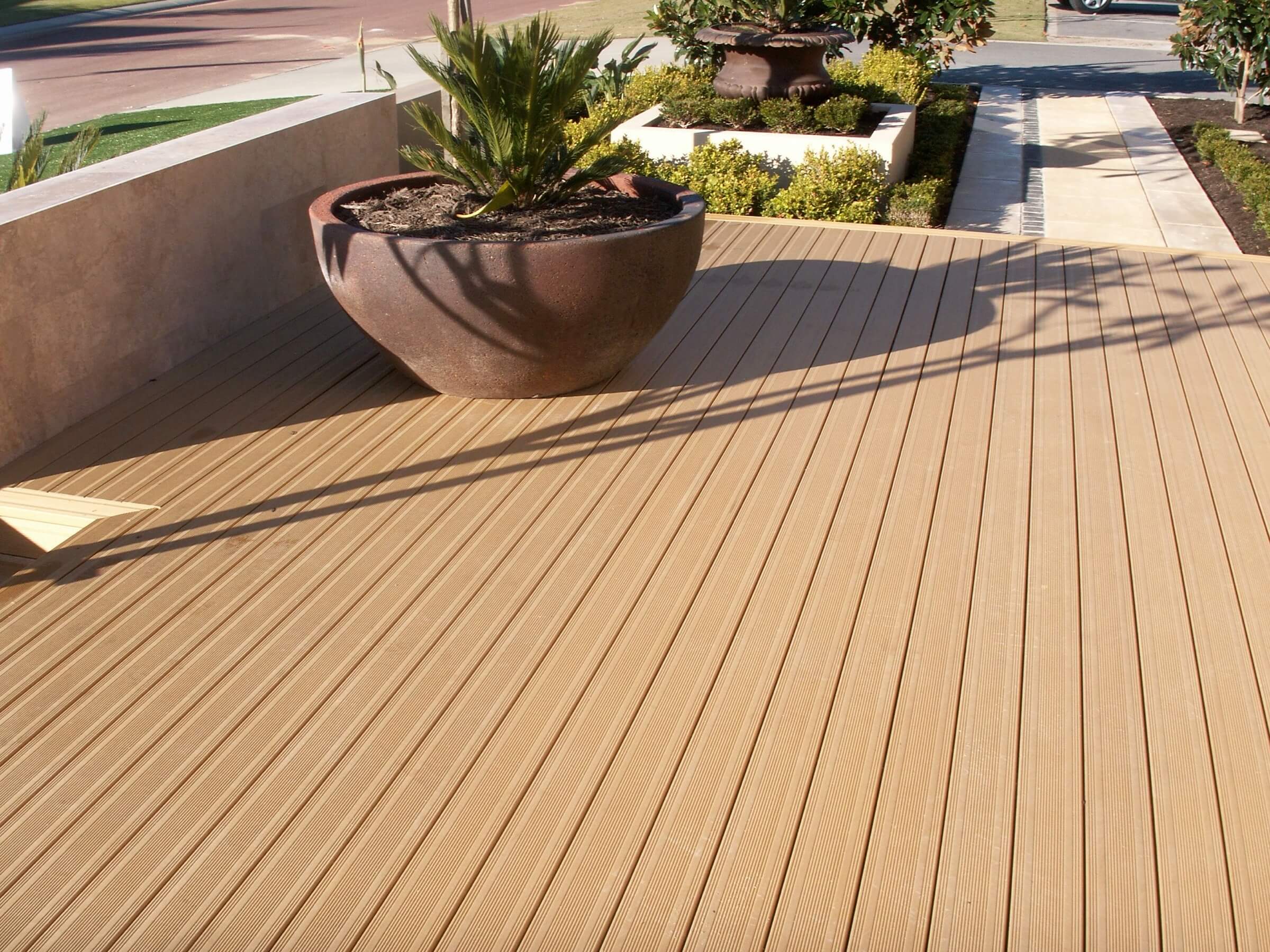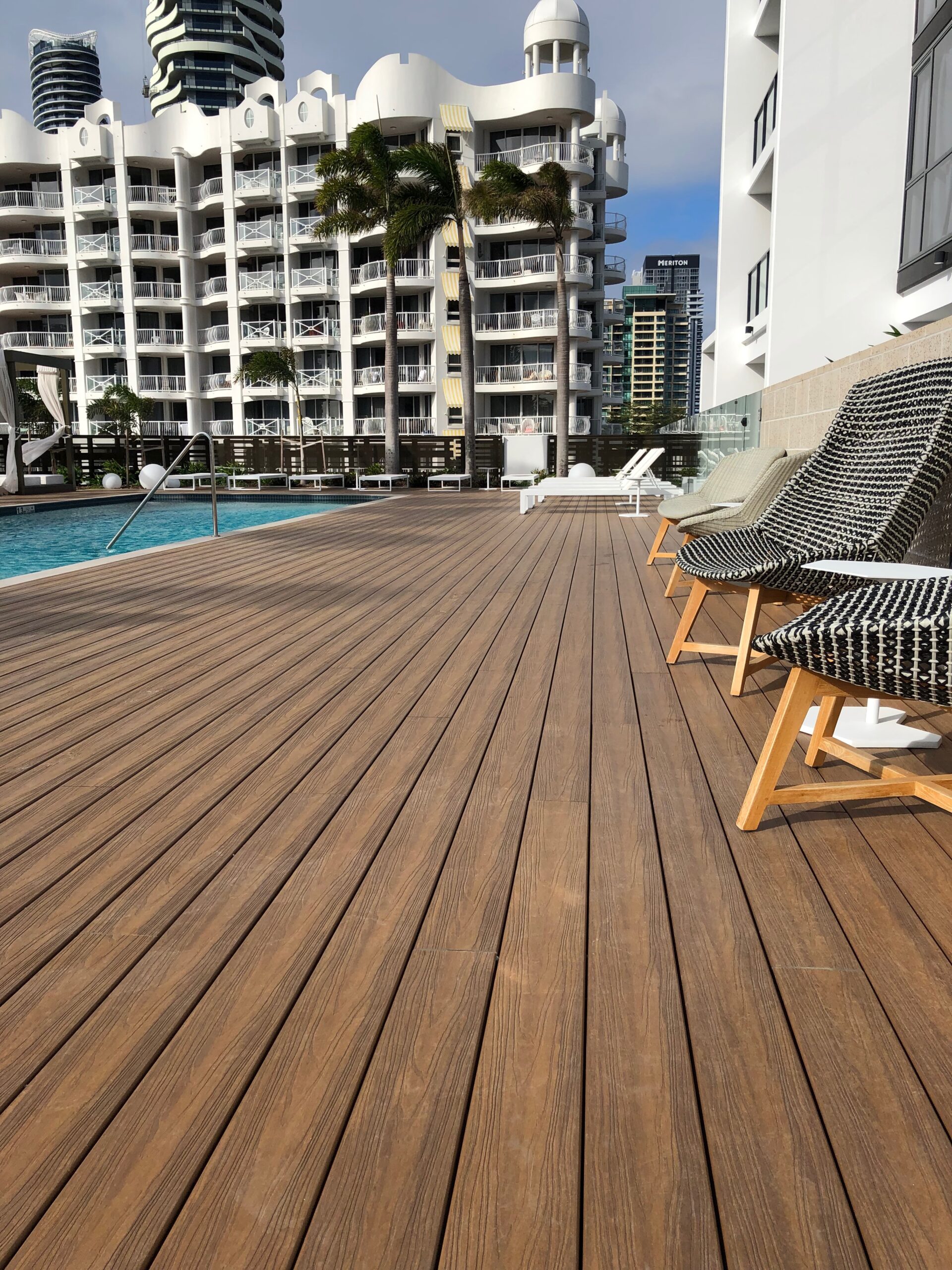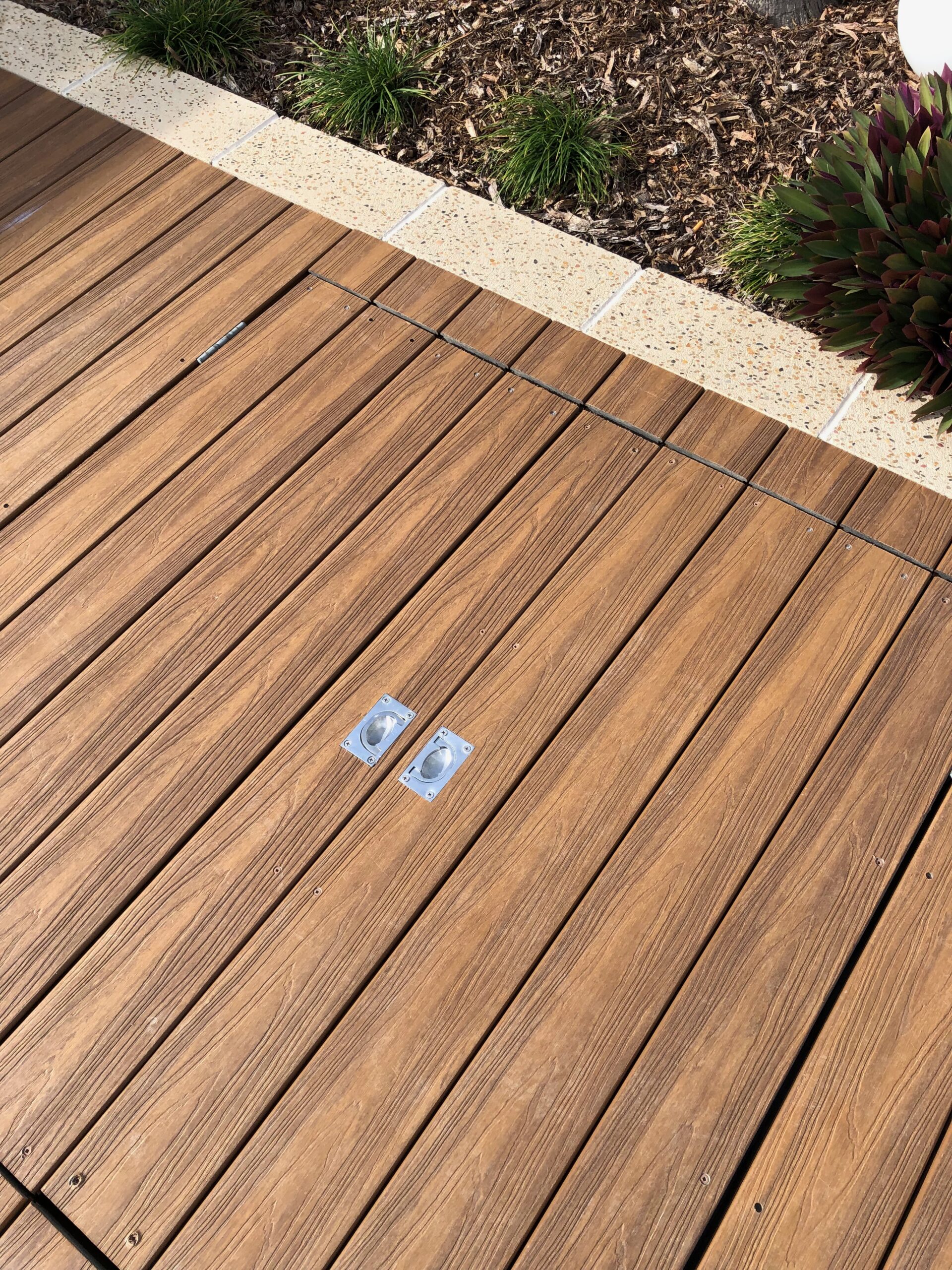Composite decking is a relatively new addition to the timber decking industry. We have long been supporters of hardwood timber decking, but the addition of composite decking has become an undeniable benefit to homeowners and trade contractors who want to enhance the beauty of their deck as well as reduce the overall and continual investment required for decking. There are a variety of reasons someone would choose to go with composite decking over traditional timber decking, and we will try to cover the differences and benefits here.
What is composite decking?
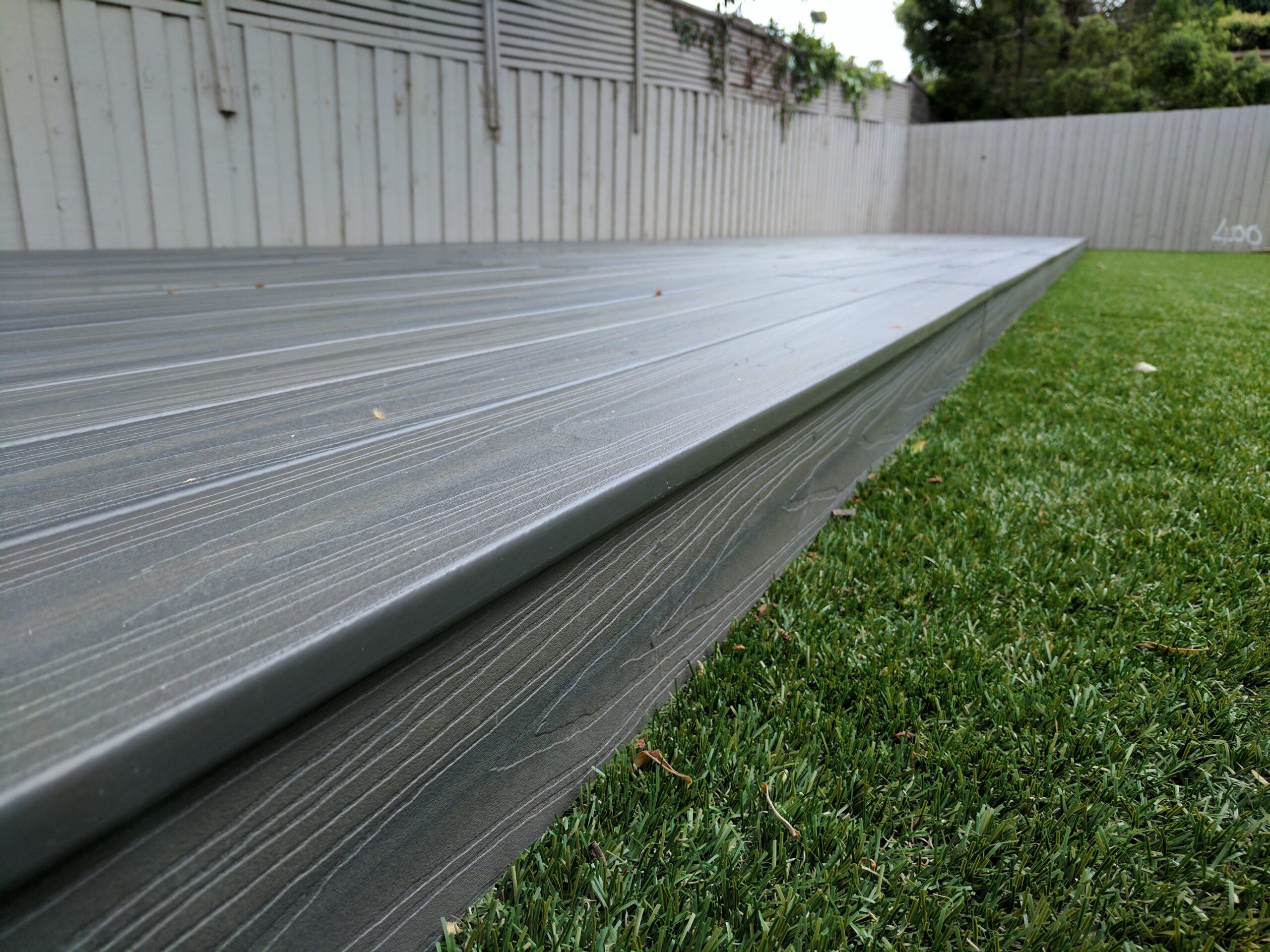
Composite Decking is Not Timber Decking
The timber decking we are all familiar with has been around and modified since the first huts were hobbled together with a mixture of wood and twine. Timber decking is usually made from a wood product of some kind. This might be treated pine, or hardwoods including merbau, spotted gum, blue gum, and others.
Logging companies go out, rip through a stretch of forested land like a ravenous wild cat and carry the timber back to a timber processing plant. These might be called a lumber mill, saw mill, etc. The timber is inspected, cut to size, and often put through a number of treatment options for use in different situations. Smaller timber used for furniture is going to be indoors and stained and finished heavily. It does not get the same processing as the larger timber boards used for building outdoor timber decking and doesn't get the same chemical process treatment as the timber used for indoor panelling, for example.
Composite decking, on the other hand, is comprised of a variety of materials. These are a combination of both materials that might have otherwise gone away as waste and some that are newly created to work in conjunction. It is a composite of both timber and polymers amongst adhesive chemicals that bind the two together. Different manufacturers use different raw materials and different mixing methods, but the core concept remains the same.
The days of choosing simply between timber or timber for your decking project are gone, my friends. We have made several advancements in our quest to make things last longer, be easier, and be less expensive. Composite decking is just one of those options, and it seems to be one of the most viable options that addresses all of our needs and concerns in the timber decking industry.
Traditional timber decking requires regular maintenance throughout the months and years that you have it. Of course, you need to inspect the structural integrity of the deck every few months or so. This is for safety and to help ensure that your deck will remain standing strong for years to come. When working with this traditional timber decking, you will also need to work regularly at sanding the boards and re-finishing them. When boards become stained or faded to enough of an extent, you may consider replacing them to maintain the beauty of your timber decking.
The Benefits of Composite Decking
Of course, one of the biggest concerns when investing in any new advancement is the cost. A lot of people have a valid concern when being pitched a new technology. Sales reps will tout the benefits of a product and encourage homeowners and trade contractors to spend more upfront in light of how much they are going to save over the long run. Composite decking will save you money in the long run. This is a given—we’ll talk more about the how and why in a moment. It is important to note, however, that composite decking also costs about the same or less as traditional timber decking.
Because of the unique manufacturing process that composite decking goes through, you will save money right up front too. Composite decking has a pre-finished outside. This means you are not going to have to buy the sandpaper or sander for the decking. You also do not need to invest in the brushes or finishes to coat the decking with. Composite decking is pre-finished. It helps to think about it this way. You do not want to stain or refinish composite decking, because the harsh chemicals can eat away at the bonding that makes the composite boards what it is.
Worry Less, Enjoy More
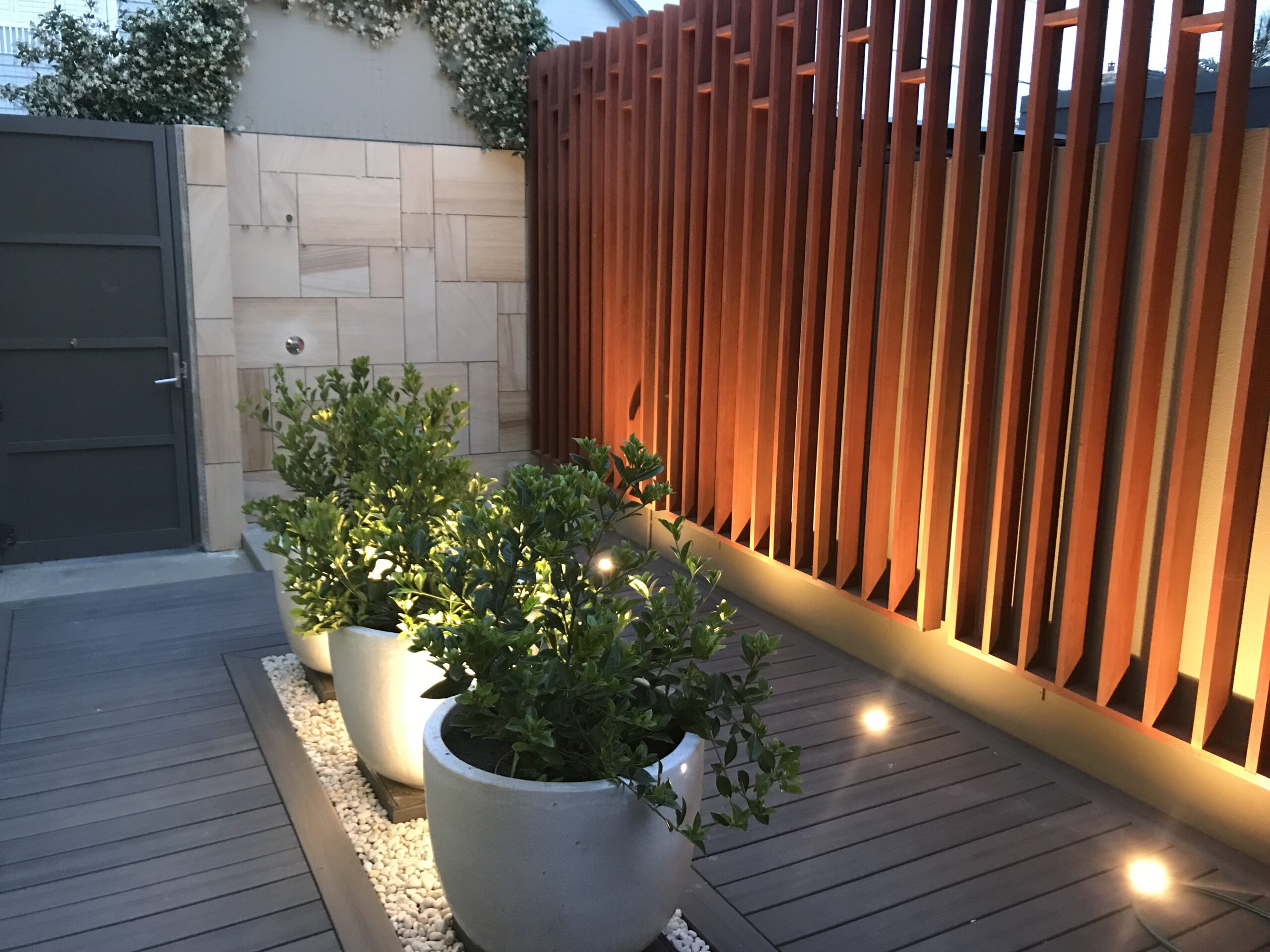
While you still need to inspect your composite decking on a regular basis, you do not need to put the work into it, that you would with traditional timber decking. You still need to inspect for the structural integrity, mould growth, and fractures that you normally would. However, the benefit of composite decking is that you should never need to sand or refinish the boards.
Because of how composite decking is made, the boards come with a pre-styled finish. With regular timber decking, you may have trouble with unmatched grain or knotty wood, where even if you do stain it, it does not stain evenly. Beyond that, because of the way timber decking is normally treated, you may have slight colouring variations. These colouring variations can really detract from the beauty of your whole deck. With composite decking, with the exacting process, it goes through for manufacturing, all the boards are created equally, so you need not worry about spotty and slightly off colour. You are not just stuck with one colour when you go with composite decking either. Composite decking comes in a variety of colours and styles.
Deck-Max Composite Decking
Deck-Max has enhanced the decking industry with high-quality innovation once more. This time, they have brought composite decking into the fold in a way it has never been seen before. Where we have seen how the Deck-Max Original and Pro secret fixing system have enhanced decking projects like none other—quickening the job finish time, lowering cost, enhancing safety, and lengthening the lifespan of your deck—we now get to see it with composite decking.
With most forms of composite decking, the inside of the board is mostly hollow. So, for people looking to build their decking using a biscuit system, without driving nails through the decking boards, composite decking is not going to work. Normally, with traditional timber decking, you could cut long kerfs into the side edges of the decking board that would fit in the decking fixture biscuits. If the inner board is hollow, cutting in these kerfs is not going to work and will, in fact, destroy the composite decking.
Deck-Max has entered into an exclusive agreement with top manufacturers to bring together the benefits of both the Deck-Max secret fixing decking system and the allure of composite decking. With exacting manufacturing specifications, the composite decking can now be made according to Deck-Max requirements. This means you can have the best of both worlds. Overall, it means a more beautiful, longer-lasting, easier to construct deck.
Composite Decking Warranty
Depending on the particular composite decking you are looking at, you will also be faced with an option of warranty. Because composite decking is made the way it is, it does not need to be finished, as mentioned previously. As part of that, quality manufacturers will offer a warranty on the finish and colouration of the composite decking boards. So long as you wipe up any spills from the composite decking quickly (e.g., not allowing fluids to stay on the deck for more than 24 hours), and loss or change of colour to the composite decking boards will be covered by the manufacturer for a period of time. This is usually a number of years, such as a decade.
Furthermore, most composite decking manufacturers offer a warranty that their composite decking will always match. This avoids the trouble we often face with traditional timber decking, where we get boards where the colour is slightly off or the groove does not match exactly, throwing off the appearance of the whole deck. When this happens with timber decking, we are often left holding the useless timber and buying new timber—an added cost that we did not necessarily count on. With composite decking, the manufacturer will not let this happen to you. If composite decking boards do not match the rest of the stock, they will replace it.
Composite Decking Overview
So, let’s have a quick review of composite decking. Whereas traditional timber decking requires regular staining and sanding, these things are not required of composite decking although both require regular cleaning. The mixture of composite decking helps to prevent rot and adds resistance to moisture, although additional mould inhibitors can be added to further limit the growth of spores around, on, or in the boards. Timber rots overtime while the composite decking has been shown to last two to three times as long. Timber decking is highly susceptible to damage from insects and termites where composite decking is highly resistant to this issue. Composite decking does not warp, splinter, or check as normal timber decking, although it may deform under extreme heat. While you are unable to paint or stain composite decking, it is available in a variety of styles including a near plastic look to the simulated wood grain. While timber decking requires fresh product, the raw materials that make composite decking can be recycled—the exact amount of recycled product depends on the specific manufacturer.
In Closing
Hopefully, you have gained some insight as to what composite decking is and how it can help you. Of course, we are always happy to answer additional questions or field any comments. Feel free to contact us further for more information.
